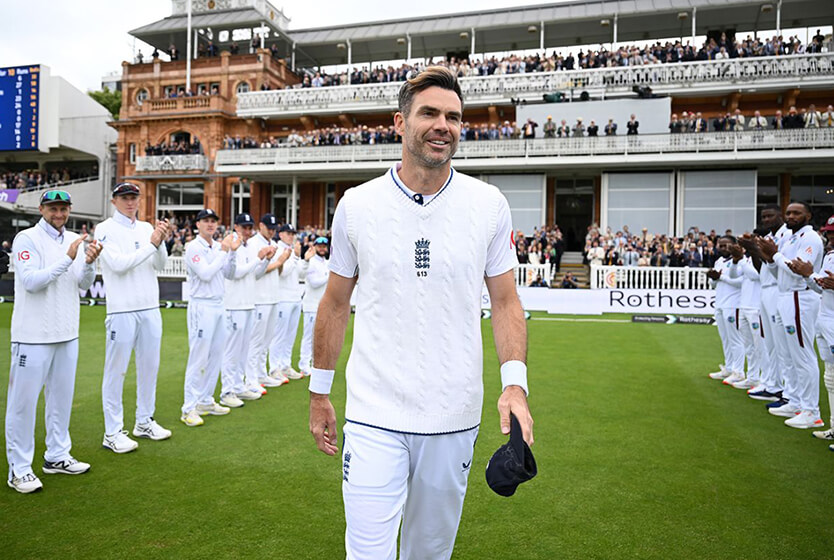
The Future of Pakistan’s Test Middle Order
With Azhar Ali retiring from Tests and the inclusion of Saud Shakeel, Pakistan’s batting is moving into a new era.
The ICC World Test Championship 2021-2023 was regarded as the Pakistan cricket team’s best chance to take the championship home. The Shaheens had to travel to Bangladesh, the West Indies, and Sri Lanka for their away games while welcoming nations like Australia, England, and New Zealand that can be formidable opponents in their own backyard but generally struggle while playing in the subcontinent. However, the embarrassing 3-0 loss to England at home last week put an end to Pakistan’s chances of making it to the championship’s final.
Pakistan’s Vulnerable Middle Order
The likes of Abdullah Shafique, Imam-ul-Haq, and Pakistan’s captain Babar Azam put on outstanding batting performances for their team throughout the championship, but there seemed to be uncertainty in the team’s middle order as there have been some underwhelming performances. At the same time, the team has welcomed some new players.
Middle-order batsmen who have represented Pakistan in the 21-23 WTC:
| Player | Matches | Runs | Average | Best |
| Babar Azam | 12 | 1301 | 62.0 | 196 |
| Mohammad Rizwan | 12 | 553 | 32.5 | 104 |
| Saud Shakeel | 3 | 346 | 57.7 | 94 |
| Fawad Alam | 8 | 296 | 32.9 | 124 |
| Salman Ali Agha | 5 | 267 | 29.7 | 62 |
Apart from skipper Babar Azam who also happens to be the tournament’s second-highest run scorer, the performance of experienced players like Mohammad Rizwan and Fawad Alam has come under scrutiny.
Beginning with Fawad Alam, who was in excellent form since his return to the Test side, most fell short of expectations. Fawad entered the WTC with a record of solid performances, including centuries against South Africa and New Zealand. He had a strong start to the tournament, too, scoring 124 runs in the second Test against the West Indies to help the green shirts in winning the second Test and drawing the series. However, he struggled against Australia, where he only managed to score a meager 33 runs in 4 innings, and appeared to be out of ideas against the Australian pacers, in particular Mitchell Starc and Pat Cummins. His bad run continued in the Test he played against Sri Lanka, scoring just 25 runs, after which he was dropped from the squad.
Vice-captain Mohammad Rizwan also fell short of expectations in this WTC. The wicketkeeper who excelled in the 2019-21 WTC had trouble in the tournament this time. His average dropped from 46.3 in the previous edition to 32.6 in this edition, and he only managed one half-century. His only century came against Australia in Karachi, where he and captain Babar Azam rescued Pakistan from the jaws of defeat. There has been much debate about Rizwan’s position in the team following the conclusion of the series against England, where he was unable to play a significant role, with Sarfaraz Ahmed waiting on the bench despite having a successful domestic season.
The Saud-Salman Duo
Fresh faces such as Salman Ali Agha and Saud Shakeel were added to the Pakistan team after the seniors struggled to achieve the desired results. While both of these players may have been new to the international stage, they consistently excelled in Pakistan’s top domestic competition, the Quaid-e-Azam Trophy.
| Player | Matches | Runs | Average | 50/100 |
| Salman Ali Agha | 82 | 5153 | 39.3 | 26/14 |
| Saud Shakeel | 60 | 4539 | 52.8 | 22/15 |
Salman Ali Agha made his Test debut against Sri Lanka this year. He is seen representing Southern Punjab in the Quaid-e-Azam Trophy. Salman is known as a strong player off the back foot who is constantly looking to score runs. He also tends to take the attack to the spinners as he frequently comes down the wicket and hits through the line of the ball. Salman was given consideration for selection after a couple of outstanding Quaid-e-Azam Trophy seasons.
| Tournament | Matches | Runs | Avg | HS | 50/100 |
| 2020-21 QEA | 10 | 941 | 58.8 | 169 | 6/2 |
| 2021-22 QEA | 5 | 465 | 46.5 | 142 | 2/2 |
| 2022-23 QEA | 9 | 662 | 55.2 | 158 | 1/3 |
Salman Agha, batting in a position that is unusual for him, has had a promising start to his career, scoring three half-centuries. His pattern of batting with the tail may have hindered him from expressing himself completely, but the right-handed batter said in an interview that he was enjoying this new challenge. Salman has struggled to convert his starts into big, impactful centuries, possibly due to batting too low in the order; despite having three half-centuries, his highest score is only 62 runs.
Left-handed batsman Saud Shakeel made his Test debut during the most recent series against England. Saud is a prominent figure who has been in the domestic scene for a while. He is praised for having a good temperament and is regarded as a classic stroke maker. He has also represented Pakistan in Under-19 cricket as well as Pakistan ‘A’ matches, where he captained the side. Just like Salman Ali Agha, he too was considered for selection after having an amazing run in the Quaid-e-Azam Trophy.
| Tournament | Matches | Runs | Avg | HS | 50/100 |
| 2020-21 QEA | 10 | 970 | 62.5 | 174 | 5/3 |
| 2022-23 QEA | 8 | 754 | 68.6 | 187 | 0/4 |
Saud scored four half-centuries in a remarkable first series against England. He helped the team out of difficult circumstances. Mohammad Yousuf, the team’s batting coach, also praised Saud for his ability to play spin. However, he also faced the same problem as Salman Ali Agha in regards to not converting his scores. Despite scoring large runs in the fourth innings of the first two games – 76 and 94, respectively – he was unable to see his team home.
The Domestic Solution
The Pakistan cricket team also has players in the domestic circuit who can prove to be the solution for their struggling middle order. These players have been selected in the squad in the past but were unable to make it to the starting eleven. But despite that, these guys have consistently competed in first-class cricket and have done remarkably well for their teams.
- Kamran Ghulam: In recent years, he has been among the Quaid-e-Azam Trophy’s most reliable batsmen. In the 2020-21 season, Kamran broke the Quaid-e-Azam Trophy’s previous record for most runs in a season. He was then included in the team for the series against South Africa but was eventually released without being given an opportunity. Kamran scored 597 runs at an average of 42.6 in 8 matches for this year’s Quaid-e-Azam Trophy. The 27-year-old has now been selected for the two-game series against New Zealand that gets underway next week, replacing Azhar Ali.
- Usman Salahuddin: The 32-year-old, who made his debut in 2018 against England, has also been a consistent performer in Pakistan’s domestic circuit. Usman has participated in 139 first-class matches. The right-handed batsman holds Mohommad Yousuf in high regard, calling him his idol. He represented Southern Punjab in this year’s Quaid-e-Azam Trophy and finished third in terms of runs scored, with 862 in 9 matches at an average of 66.3, including 4 hundreds & 3 fifties.
- Umar Amin: Another name that comes to mind when discussing experienced players who consistently deliver is Umar Amin. The 33-year-old has played 169 first-class matches and has accumulated more than 10,000 runs in first-class cricket. In the previous two seasons, he ranked amongst the top five run-scorers in the Quaid-e-Azam Trophy, and this year, he helped Northern win the QEA trophy as captain, scoring 774 runs in 10 matches at an average of 59.5 with 4 hundreds and 2 fifties.
The Retirement of Azhar Ali
There is a chance for a new star to emerge who can complement players like Babar Azam and Abdullah Shafique by adding steadiness to the middle order as the highly experienced Azhar Ali retires from international cricket. However, it is crucial that the management give the chosen candidate an extended run beginning with the upcoming New Zealand tour of Pakistan.
Given that he has been a member of the team for some time and has a strong domestic record against the red ball, it is reasonable to think that left-handed batsman Shan Masood will most likely step into Azhar Ali’s shoes. However, it is clear from the performances of the players mentioned above and a few others that Pakistan has sufficient resources to end its middle-order misery.
The opinions expressed solely belong to the writer and do not necessarily reflect the views of Grassroots Cricket.







Leave a Reply